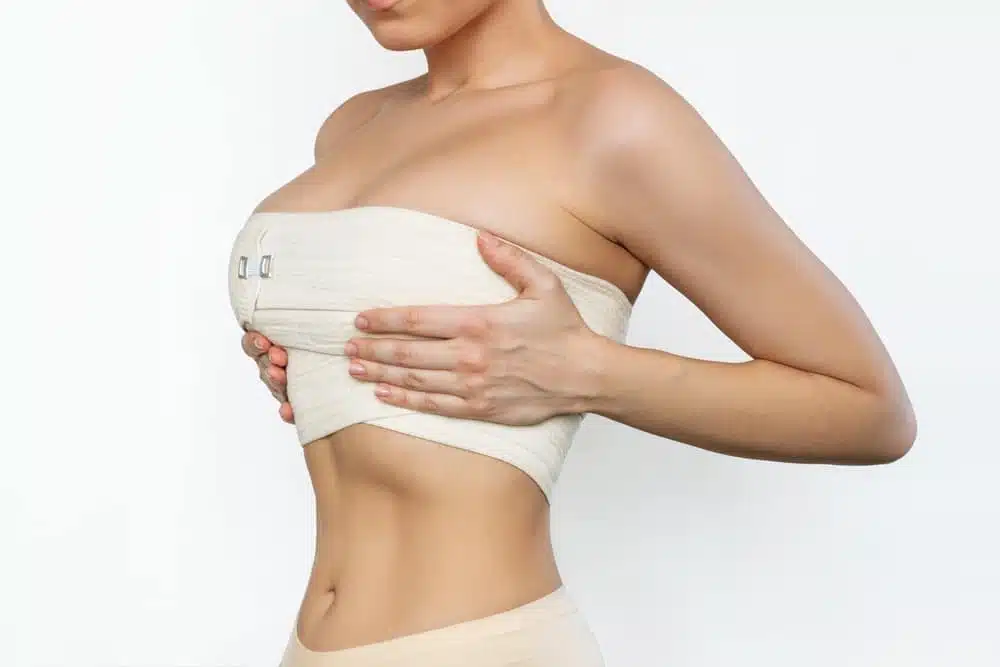Have you recently undergone breast surgery and are now dealing with unexpected chest tightness or discomfort? It’s common to feel pain or discomfort after surgery, especially around the chest area, and you’re not alone in seeking relief. After all, even though the results are exciting, the healing process can bring some unexpected challenges.
Understanding how to properly care for your chest muscles post-procedure can make a world of difference in your recovery journey. Knowing the right techniques to reduce chest tightness can speed up healing and help you enjoy the results of your breast augmentation with less tension and stress. Read on to learn what you can do to relax your chest muscles safely and effectively.

How Long Will I Experience Chest Wall Tightness After Breast Augmentation Surgery?
Chest wall tightness is a normal part of the recovery after breast augmentation and typically lasts anywhere from a few days to several weeks. This sensation is often due to pectoral muscle tension as your body adjusts to the new breast implants and the healing process begins.
As the breast tissue and chest area settle, most patients notice a gradual decrease in tightness. However, the exact duration can vary depending on factors such as implant placement, individual healing response, and adherence to post-op care guidelines.
How to Help Relax Your Chest Muscles After Breast Augmentation
Finding relief after your breast augmentation is essential for a confident recovery. While some discomfort during recovery is expected, there are several simple and effective ways to ease tension and promote comfort in your chest muscles. From gentle exercises to supportive techniques, following the right post-operative care instructions can significantly reduce tightness and help you heal more smoothly.
Deep Breathing Exercises
Incorporating deep breathing exercises into your daily routine can be a powerful tool for easing chest muscle tightness after breast augmentation. These exercises help expand the chest gently, increase oxygen flow, and support stress management during healing. Focused breathing also promotes circulation and reduces muscle tension, making it a simple yet effective technique to enhance relaxation and improve overall comfort during recovery.
Massage Therapy
Massage therapy is a gentle and effective way to relax tight chest muscles after breast augmentation. When approved by your surgeon, light massages can improve blood flow, reduce inflammation, and ease tension in the pectoral area. Always follow specific guidance regarding technique and timing, as premature or improper massage could interfere with the healing process. Done correctly, massage therapy can be a comforting, therapeutic part of your post-surgery routine.
Gentle Stretching
Incorporating gentle stretching exercises into your recovery routine can significantly reduce muscle tightness and improve flexibility in the chest area. These movements help gradually loosen the pectoral muscles without straining healing tissue. Always move slowly and stop at the first sign of discomfort. Stretching not only enhances mobility but also encourages better circulation, which supports the body’s natural healing process. Be sure to follow your surgeon’s timeline and recommendations to avoid overstretching too soon.
Heat Therapy
Applying controlled warmth to the chest area can help relieve muscle stiffness and improve circulation after breast augmentation. Using a heating pad set to a low or medium temperature for short intervals may reduce tightness and promote relaxation in the pectoral region. Be sure to place a cloth barrier between the pad and your skin to avoid burns or irritation. Always check with your surgeon before using heat therapy to ensure it’s safe based on your stage of healing.
Pain Management
Effectively managing pain after breast augmentation is key to helping your chest muscles relax. Over-the-counter or prescribed medications can ease soreness and reduce inflammation, which in turn helps relieve muscle tension. Staying ahead of the pain also makes it easier to perform light stretches or breathing exercises. Always follow your surgeon’s directions when taking medication, and report any severe or prolonged pain that doesn’t improve, as it could indicate a complication requiring attention.
Proper Posture
Maintaining proper posture after breast augmentation can significantly ease tension in your chest muscles. Keeping your shoulders back and spine aligned helps reduce pressure on the pectoral muscles and allows your body to heal in a more natural position. Avoid slouching or hunching forward, as these positions can worsen discomfort and prolong recovery. Supporting your posture with ergonomic pillows or chairs during rest can also make a noticeable difference in your day-to-day comfort.
Supportive Garments
Wearing the right supportive garments is essential to minimize strain and help your chest muscles relax after breast augmentation. Surgical bras or compression garments provide gentle, consistent support to reduce swelling and promote proper positioning of the implants. These garments also reduce unwanted movement that can contribute to discomfort or delayed healing. Follow your surgeon’s recommendations on what to wear and for how long, as this can significantly impact the quality and comfort of your recovery.
Epsom Salt Baths
A warm Epsom salt bath can offer soothing relief for sore chest muscles following breast augmentation. The magnesium in Epsom salt is known to help reduce inflammation and muscle tension, promoting a greater sense of relaxation. Soaking for about 15–20 minutes can ease discomfort and support circulation in the upper body. Always wait until your incisions are fully healed and get approval from your surgeon before taking any baths to prevent the risk of infection or delayed healing.
Are You Ready For A Consultation?
Join our satisfied clients who’ve experienced safe, effective treatments
Other Tips for Breast Augmentation Recovery
While relaxing your chest muscles is important, a smooth recovery also depends on maintaining healthy habits that support your body from the inside out. From fueling your healing process with nutrition to practicing smart lifestyle choices, these general tips can help speed up recovery and prevent complications. Small daily efforts like getting adequate hydration and rest can go a long way in helping you feel your best.
- Eat a nutrient-rich diet: Consuming a variety of fruits, vegetables, lean proteins, and healthy fats provides your body with the building blocks it needs for tissue repair and immune support.
- Drink plenty of water: Staying well-hydrated supports circulation, flushes toxins, and aids in reducing swelling—making adequate hydration an essential part of healing.
- Avoid smoking and alcohol: Both can impair the healing process and increase the risk of complications. Staying smoke- and alcohol-free gives your body the best chance to recover smoothly.
- Get enough rest: Prioritize sleep and downtime, as your body does much of its repairing during periods of rest. Avoid overexertion in the early stages of recovery.
- Follow all post-op instructions: Your surgeon’s post-operative care instructions are designed to keep you safe and promote optimal results. Stick to their timeline and guidelines for the best outcome.
Primary Rhinoplasty Before and After Photos


* Each patient is unique and individual results may vary.
Consult with an Expert Breast Implant Surgeon
Choosing an experienced surgeon is crucial when it comes to breast augmentation recovery and ensuring the best possible outcome. Proper care during and after the procedure minimizes complications like chest muscle tension and supports your long-term satisfaction. An expert can guide you through recovery techniques that actually work.
Dr. Ember Ewings is a trusted name in plastic surgery, known for her dedication to the surgical arts and personalized patient care. With a medical degree from the University of Wisconsin-Madison, a residency in plastic surgery at Saint Louis University, and international fellowship training, she brings unmatched expertise to every breast augmentation procedure. Call us today at 715-833-2116 or visit our contact page to schedule your consultation.



